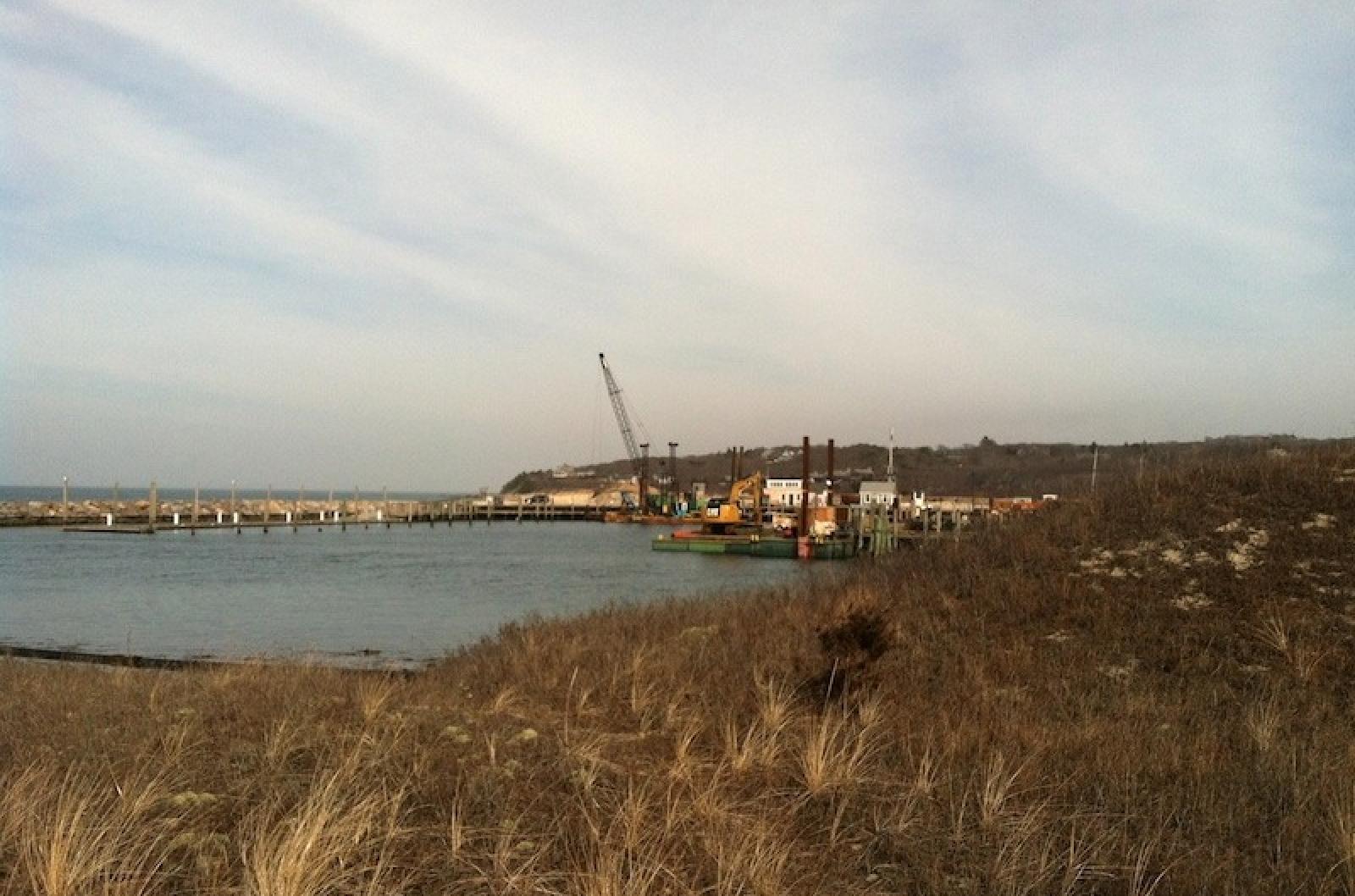All was quiet in Menemsha on a mild day this week, except for the eerie clanking of metal in the harbor. A black construction crane rose from a barge tied up near the east jetty in Chilmark, while two other barges gently knocked together in the current, sending echoes across the water.
A long black pipeline on the Aquinnah side was draped over the west jetty, snaking its way along Lobsterville Beach to the west. About a mile and a half away, it came to an abrupt halt at the peak of a dune, overlooking rows of neatly-planted beach grass and three silent bulldozers aways up the beach.
Last week marked the arrival of winter flounder in Menemsha Pond, and the end (for now) of a tumultuous dredging project that began in 2015. The contractor, J-Way Inc. of Avon, Ohio, missed the same winter flounder deadline last year, leaving its equipment in place for months — including a 1.5-mile pipeline along Lobsterville Road.
This year, the pipeline took a different route along the beach, where it remains, although it now poses less of a risk to drivers and pedestrians.
Just inland from the harbor, on Menemsha Pond, three flatbed trucks sat tucked away at the landing to Red Beach, one piled high with sections of black pipeline, and the others surrounded by barrels, highway cones and other debris.
After the company missed the deadline last year and failed to remove its equipment, the U.S. Army Corps of Engineers, which is managing the project, reportedly fired the company, but then agreed to retain it for another season.
In a statement this week, Army Corps Project manager Craig Martin said a request to extend the project beyond the Jan. 31 deadline had been denied by the state Department of Environmental Protection.
“[T]he Corps is now reviewing its options,” Mr. Martin said, adding that J-Way had removed about 4,000 cubic yards of sand from the channel as of Jan. 10. He said a post-dredge survey would be completed in the next couple of weeks.
All of the sand so far has been pumped onto Lobsterville Beach, which was severely damaged during Hurricane Sandy in 2012. More than 70 volunteers turned out last year to help reinforce the restored area with beach grass, a project overseen by the Wampanoag Tribe’s natural resources department.
J-Way removed four times as much sand in the 2015-2016 season, despite having gotten a late start. The project likely has yet to pass the halfway point, with about 25,000 cubic yards of sand left to dredge as of Jan. 10.
Town officials and waterfront observers had been hopeful the contractor would finish this season, but a series of setbacks, including a blown bearing and a problem with the shaft on the dredge didn’t make things any easier this time around.
At their meeting on Tuesday, the Chilmark selectmen appeared resigned to a project they have opposed from the beginning, in light of a potential influx of larger boats in the pond, which is considered a federal harbor of refuge.
“There is a lot of stuff sitting in the harbor and in the pond,” selectman James Malkin said at the meeting. “I have no information as to when it will leave or be removed. It has been another lovely year.” He added that he was unaware of any plans to resume dredging after the winter flounder season, or if the same contractor would return.
“It’s sort of like deja-vu,” selectman Bill Rossi said.
“All over again,” said Mr. Malkin.




Comments
Comment policy »